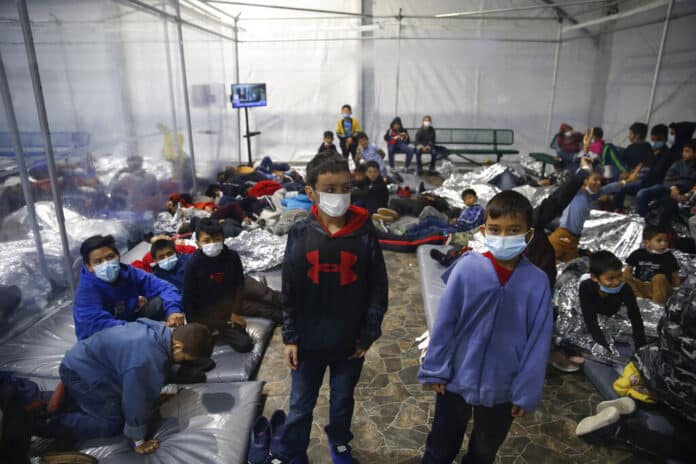
The city of Donna is set to receive half-a-million dollars in exchange for leasing land to Border Patrol for a tent facility holding the greatest number of migrants in the Rio Grande Valley, records show.
“I think it’s going to help out,” Javier Villalobos, Donna city attorney, said Tuesday, referring to its impact on the local economy.
The lease agreement was signed Jan. 19 between the city and U.S. Customs and Border Protection. It allowed for the creation of a “temporary humanitarian crisis center, which may include administrative and law enforcement facilities, healthcare and childcare facilities, general government service facilities, parking areas, and any other reasonably related uses.”
A similar tent structure was built in 2019 near the Donna-Rio Bravo International Bridge, but the property did not belong to the city.
The tent constructed at the current site has come under scrutiny for holding more than the intended 250-person capacity. As of Tuesday, the site was 1,540% over capacity with about 4,100 migrants in custody, according to the Associated Press.
Throughout its Rio Grande Valley sector, U.S. Border Patrol held 4,950 people in their custody Tuesday, with over 80% at the Donna tent site. It’s become the largest holding area after the Central Processing Center in McAllen was shut down last November for a year-long renovation project.
For each month the government uses Donna’s land, the city is paid about $41,600. The contract is for one year and it is expected to total about $500,000.
“Hopefully, it’s going to help out. I know there’s a lot of projects the city wants to do and it’s been kind of tight, especially with COVID,” Villalobos said.
City officials discussed the proposal in executive session in January, but Villalobos said they were eager to reach an agreement.
“It’s very beneficial, so when they [CBP] wanted to locate there in Donna, I think the commission pretty much got the idea and worked it pretty quick,” Villalobos said.
The site is used to shelter migrant families, single adults and unaccompanied children — a demographic proving challenging due to a backlogged system operated by the Health & Human Services.
The agency, through the Office of Refugee Resettlement, is responsible for sheltering children and placing them with relatives in the United States, but the overwhelming numbers are exceeding bed space and resources currently available.
As a result, HHS is building and opening new spaces, including a site within the Donna tent facility, to expedite the process.
As the federal government continues processing thousands of migrants through their site in Donna, the federal government is also paying its utility bills.
“They use a lot of water, and the city provides it,” Villalobos said, referring to the water bill. “We’re making sure that we have the capacity to provide whatever is necessary for the citizens and then the immigrants.”
The lease agreement started Jan. 15 and includes the option of applying four extensions — each six months long. Villalobos said he’s not aware of any extensions at this time.
Meanwhile, to help relieve stress in their facilities, Border Patrol continues releasing migrants in nearby cities like McAllen, Harlingen and Brownsville. Cities and non-governmental organizations are seeking monetary relief as they help shelter, feed and guide migrants from the cities to their final destinations.
Aid will likely arrive soon from the Emergency Food and Shelter National Board Program.
“We have almost $115 million dollars that are available and can be used all the way up to 2025 for the next four years,” Cuellar said during a virtual press conference earlier in March.
On Tuesday, Cuellar said it could be another few weeks before the funding is made available.




